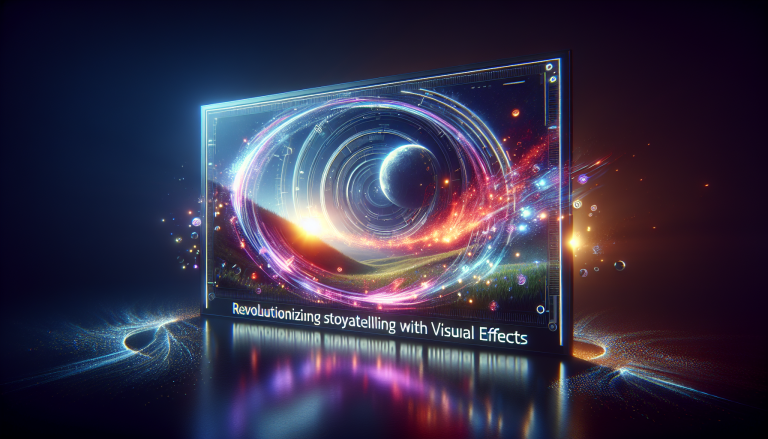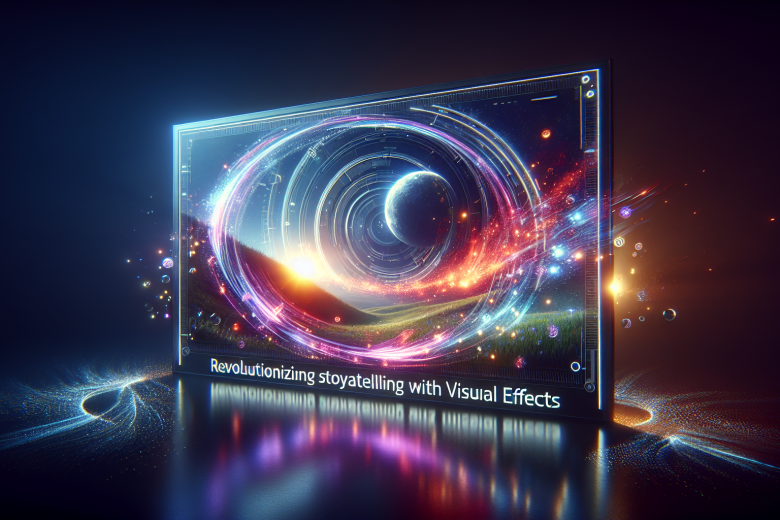The Transformative Power of Visual Effects in the Computer Graphics Industry
Visual Effects: Redefining Storytelling with Computer Graphics
Visual Effects (VFX) have revolutionized how stories are told in film, television, gaming, and emerging platforms like Virtual Reality (VR). Leveraging the immense potential of computer graphics, VFX creates immersive, realistic, or fantastical environments that captivate audiences and push the boundaries of imagination. The seamless integration of computer-generated imagery (CGI) with live-action footage enriches narrative depth, demands technical mastery, and fuels innovation across industries.
The Growing Significance of Visual Effects in Computer Graphics
Advancements in computer graphics tools and rendering technologies have elevated VFX from simple compositing tricks to sophisticated, photorealistic experiences. Key areas where VFX drives industry evolution include:
– **Immersion Enhancement:** Detailed environmental simulations, particle effects, and realistic lighting bring scenes to life.
– **Time and Space Manipulation:** Controlled slow motion, morphing, and virtual set extensions create unique narrative mechanics.
– **Character Realism:** Digital doubles and complex facial animation enhance believability.
– **Cost and Safety Efficiency:** Risky stunts or expensive locations are recreated digitally, reducing production constraints.
As consumer expectations rise, visual effects artists must continuously adapt by mastering new software, workflows, and hardware capabilities. This makes VFX a linchpin for the future growth of the computer graphics ecosystem.
Core Components of Modern Visual Effects Pipelines
Understanding the structure of a VFX pipeline offers actionable insights for practitioners and creatives aiming to innovate or collaborate effectively:
| Pipeline Stage | Description | Key Tools/Techniques |
|————————-|———————————————————————-|———————————|
| Pre-Visualization (Previs) | Rough digital mockups of scenes to plan shots and effects timing | Maya, Blender, Storyboard Pro |
| Asset Creation | Modeling, texturing, and rigging 3D assets for integration | ZBrush, Substance Painter, Houdini |
| Simulation | Generation of physical phenomena like fire, smoke, fluids | Houdini, FumeFX, RealFlow |
| Animation | Bringing assets to life through keyframes, motion capture | MotionBuilder, Maya |
| Lighting & Rendering | Setting scene lighting, reflections, shadows and generating final frames | Arnold, V-Ray, Renderman |
| Compositing | Layering CG elements over live-action footage and color grading | Nuke, After Effects |
Each step demands both strong technical acumen and creative problem-solving to maintain quality and efficiency.
Expert Strategies to Excel in Visual Effects
Mastering visual effects requires more than just technical prowess; it embraces creativity, collaboration, and continuous learning. Here is a distilled framework to help aspiring and seasoned artists thrive:

– **Invest in Strong Fundamentals:** Deep understanding of light physics, anatomy, and cinematic principles enhances realism.
– **Embrace Procedural Techniques:** Automation through node-based systems (e.g., Houdini) accelerates complexity handling.
– **Prioritize Collaboration:** VFX is multidisciplinary; close communication between artists, directors, and developers is critical.
– **Leverage Real-Time Rendering:** Tools like Unreal Engine enable faster iterations and immersive previews that improve decision-making.
– **Keep Abreast of Hardware Trends:** GPUs, AI-driven upscaling, and cloud rendering are reshaping production pipelines.
– **Expand Into Related Domains:** Supplement expertise with skills in VR, gaming engines, and photogrammetry to widen opportunities.
– **Build a Robust Portfolio:** Diverse reels showcasing problem-solving and artistic range attract premium projects.
Comparing VFX Software Suites: Finding the Right Fit for Your Workflow
Choosing the right tools shapes the efficiency and quality of visual effects projects. Here is a snapshot comparison focused on core attributes:
| Software | Strengths | Ideal Use Cases | Learning Curve |
|———————-|———————————-|——————————|——————-|
| Houdini | Procedural generation, simulations | Complex particle effects, fluids | Steep |
| Maya | Animation rigging, industry standard | Character animation, layout, modeling | Moderate |
| Nuke | Advanced compositing | VFX finishing, color correction | Moderate |
| Blender | Free, versatile open-source | Indie projects, modeling, animation | Beginner-friendly |
| After Effects | Motion graphics, 2.5D compositing | Broad VFX tasks, motion design | Beginner-friendly |
Understanding project demands alongside team skills guides efficient tool adoption and integration.
Visual Effects and Virtual Reality: Converging Technologies
The intersection of Visual Effects, Virtual Reality, and gaming is unlocking visionary storytelling avenues. Unlike traditional films, VR environments demand real-time, fully interactive VFX that maintain immersion without latency. This entails:
– **Optimizing Assets:** Balancing detail with performance constraints on VR hardware.
– **Dynamic Effects:** Real-time particle systems, volumetric lighting, and spatial audio synchronized with user interaction.
– **Immersive Storytelling:** VFX that respond contextually to player presence and decisions deepen engagement.
These challenges underscore the need for cross-disciplinary expertise in CG, VFX, and real-time engine workflows, pushing the visual effects profession into new frontiers.
Step-by-Step Guide: Creating a Realistic Fire Effect in VFX
Fire is one of the trickiest visual effects due to its chaotic nature and interaction with the environment. Here’s a concise, practical workflow using Houdini:
1. **Set Up Pyro Simulation:** Initialize a volumetric grid representing fuel and temperature fields.
2. **Emit Fuel and Temperature:** Define emitter geometry and parameters controlling fire intensity.
3. **Adjust Simulation Properties:** Tweak buoyancy, vorticity, and dissipation for natural movement.
4. **Apply Shaders:** Use physically based shaders to define color, light emission, and transparency.
5. **Integrate Lighting:** Add scene lights that interact realistically with the fire’s glow.
6. **Render with Volume Renderer:** Generate final frames emphasizing detail while managing noise.
7. **Composite Over Footage:** Blend rendered fire elements with live-action, adjusting color and blending modes to fit.
This disciplined approach enables artists to recreate compelling fire effects, demonstrating the synthesis of simulation and compositing in VFX.
Empowering the Next Generation of Visual Effects Innovators
The visual effects landscape is evolving at a breakneck pace. To ride this wave of innovation:
– **Cultivate Curiosity:** Explore emerging technologies like AI-driven animation and photorealistic capture.
– **Network Extensively:** Collaborate across disciplines—CG artists, game developers, VR creators—to share insights.
– **Adapt to Agile Pipelines:** Learn to iterate rapidly while maintaining creative vision.
– **Champion Storytelling:** Remember that VFX strengthens stories; technology serves narrative, not the other way around.
Visual effects unlock the limitless potential of computer graphics to transport, thrill, and inspire. Mastery of this craft positions artists at the cutting edge of entertainment’s future. Dive into the tools, embrace innovation, and shape worlds that transcend reality itself.

